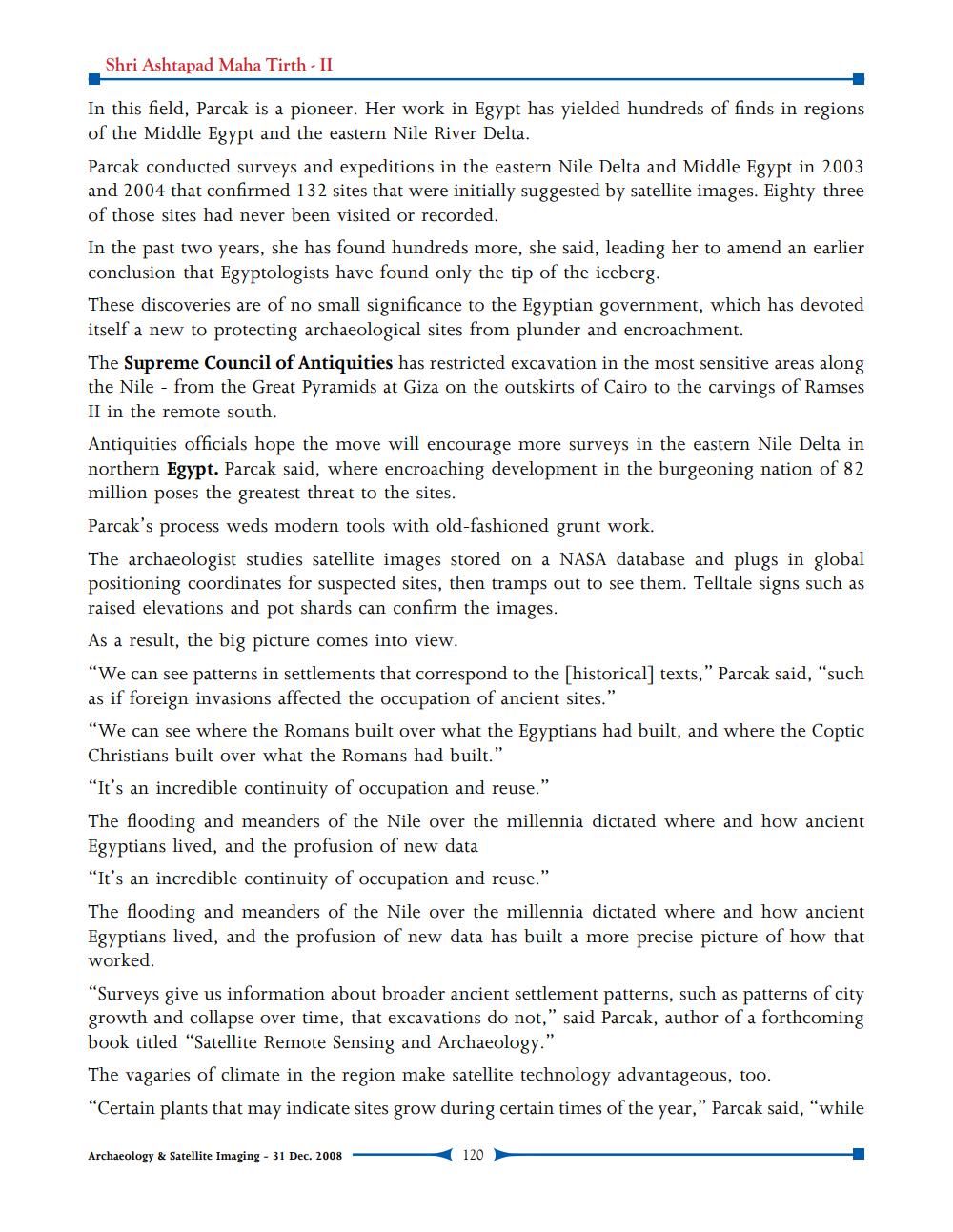________________
Shri Ashtapad Maha Tirth - II
In this field, Parcak is a pioneer. Her work in Egypt has yielded hundreds of finds in regions of the Middle Egypt and the eastern Nile River Delta. Parcak conducted surveys and expeditions in the eastern Nile Delta and Middle Egypt in 2003 and 2004 that confirmed 132 sites that were initially suggested by satellite images. Eighty-three of those sites had never been visited or recorded. In the past two years, she has found hundreds more, she said, leading her to amend an earlier conclusion that Egyptologists have found only the tip of the iceberg. These discoveries are of no small significance to the Egyptian government, which has devoted itself a new to protecting archaeological sites from plunder and encroachment. The Supreme Council of Antiquities has restricted excavation in the most sensitive areas along the Nile - from the Great Pyramids at Giza on the outskirts of Cairo to the carvings of Ramses II in the remote south. Antiquities officials hope the move will encourage more surveys in the eastern Nile Delta in northern Egypt. Parcak said, where encroaching development in the burgeoning nation of 82 million poses the greatest threat to the sites. Parcak's process weds modern tools with old-fashioned grunt work. The archaeologist studies satellite images stored on a NASA database and plugs in global positioning coordinates for suspected sites, then tramps out to see them. Telltale signs such as raised elevations and pot shards can confirm the images. As a result, the big picture comes into view. “We can see patterns in settlements that correspond to the [historical] texts," Parcak said, "such as if foreign invasions affected the occupation of ancient sites." "We can see where the Romans built over what the Egyptians had built, and where the Coptic Christians built over what the Romans had built." “It's an incredible continuity of occupation and reuse.” The flooding and meanders of the Nile over the millennia dictated where and how ancient Egyptians lived, and the profusion of new data "It's an incredible continuity of occupation and reuse." The flooding and meanders of the Nile over the millennia dictated where and how ancient Egyptians lived, and the profusion of new data has built a more precise picture of how that worked. "Surveys give us information about broader ancient settlement patterns, such as patterns of city growth and collapse over time, that excavations do not,” said Parcak, author of a forthcoming book titled "Satellite Remote Sensing and Archaeology." The vagaries of climate in the region make satellite technology advantageous, too. "Certain plants that may indicate sites grow during certain times of the year," Parcak said, "while
Archaeology & Satellite Imaging - 31 Dec. 2008
120




